Ludwig Godefroy
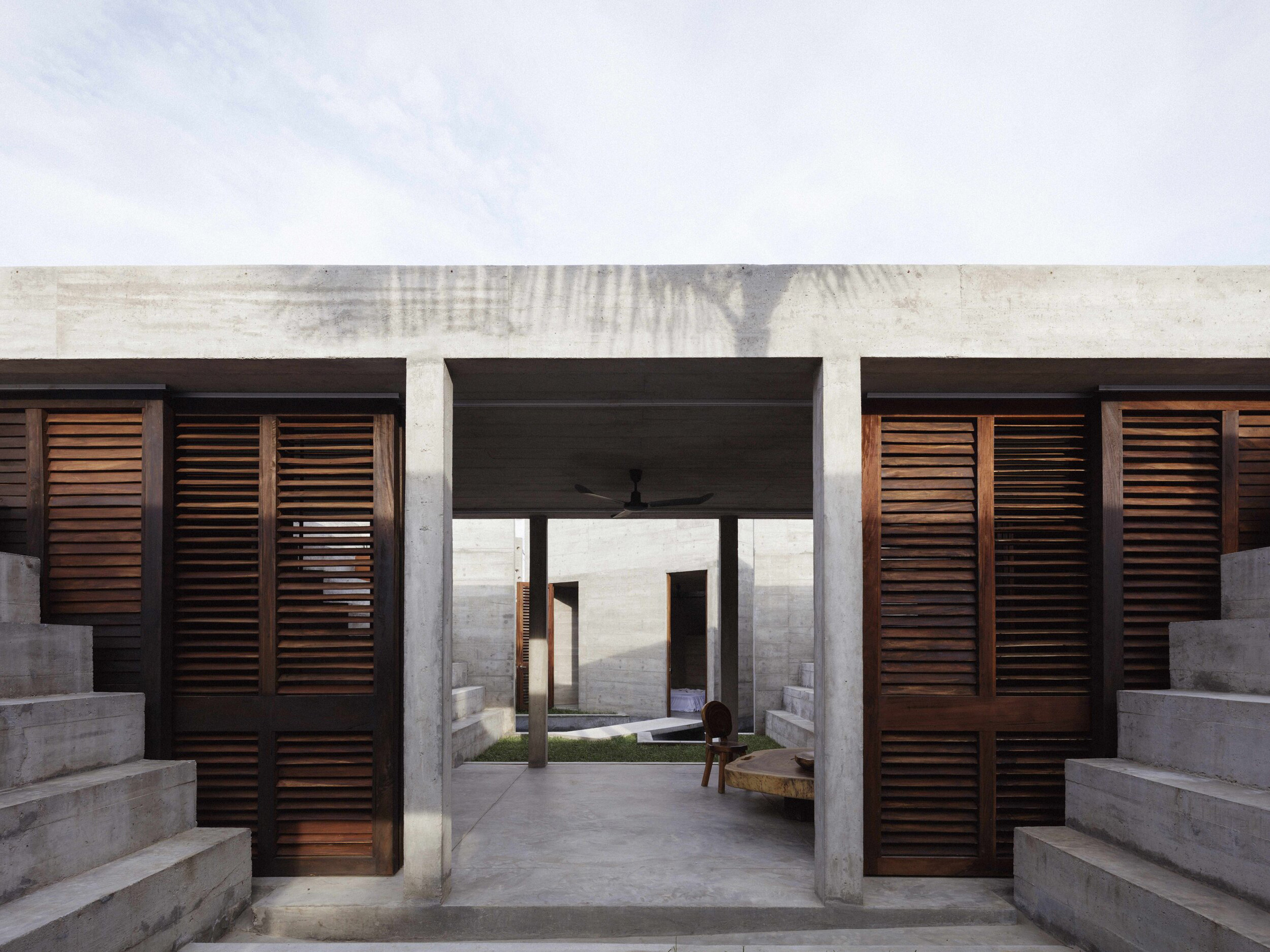
“the relationship with the emotions you will feel in a space is the very essence of a project”
Raw concrete, old brick and pale gravel glow under the golden light of the sun in Mérida, the capital city of Mexico’s Yucatán state, which is considered as the centre of indigenous Mayan civilisation. When designing Casa Mérida, architect Ludwig Godefroy asked the question “How is it possible to build architecture that reflects and considers the Yucatán identity, to make this house belong to its territory? In other words, how could this house be Mayan?” Inside the decor is as simple as the outside, with wood, stone, and pops of blue which mirrors the turquoise swimming pool at the back of the property.
The site itself has rather odd proportions for a house, it’s only eight meters wide and eighty meters long, resembling a road or pathway more than a traditional plot of land than a home. However, Godefroy has turned this to his advantage, inserting open patios between the buildings to create traditional airflow cooling concepts in a city which is known for its extreme climate and high temperatures. He also references a Sacbé, which is the name for the ancient Mayan road system which would connect the indigenous people’s of the land. “Those straight lines used to connect all together the different elements, temples, plazas, pyramids and cenotes of a Mayan city; sacred ways which could even go from one site to another along a few hundred kilometres.” NR Magazine joins the artist in conversation.
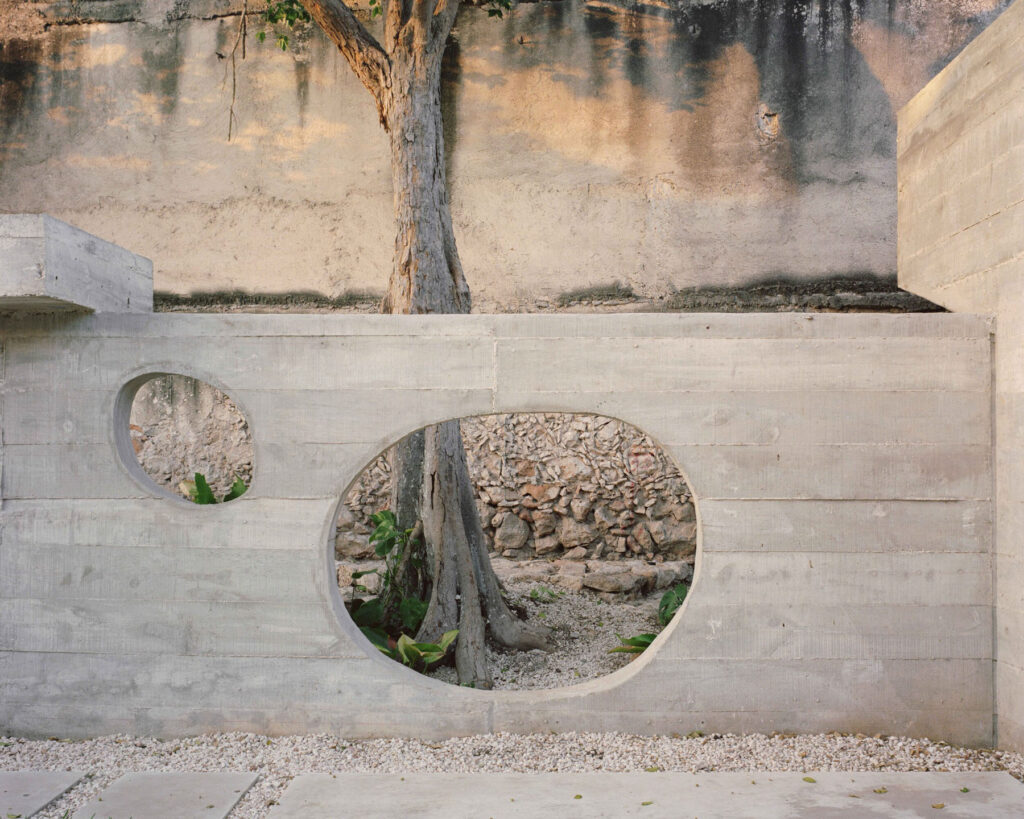
How do you think cultural identity influences design and architecture?
Definitely, it does according to my way of thinking. I always look around me and since I arrived in Mexico, it’s been now 14 years, my architecture changed, became heavier, made out of concrete, stone and tropical wood. Mexico changed my way of designing, I started to look at prehispanic architecture and mixed it with my personal taste, the bunkers from Normandy (where I was born), my European education and background working with OMA and Enric Miralles / Benedetta Tagliabue.
But now, I definitely consider myself a Mexican architect and not a French or European architect anymore. Mexico is the country where I live, it’s my inspiration, and it’s made out of Mexican references and Mexican moments of life. The way I’m building right now is also Mexican, more handcrafted and less industrialised, always integrating locals knowledge and details coming from Mexican vernacular architecture and ways of building it.
My architecture became a bunker from Normandy on the outside, protecting my personal Mexican pyramid on the inside, both connected by the use of vernacular simplicity; vernacular simplicity from my fisherman village in Normandy being, in a way very, close to the vernacular simplicity of the Mexican countryside where I build.
Do you think there is much to learn about sustainability from indigenous’s cultures like the Mayans and which of these methods were used when building Casa Mérida?
It’s a very complicated question, the context of our lives radically changed, and the globalisation as well. But definitely, our relation with nature is the one that suffered the most. I don’t think we have to feel ashamed of building, I mean I’m an architect and it’s my job, but probably what I’ve learned from indigenous cultures and, in my case, more specifically from pre-hispanic civilisation legacy is: what do we want to feel inside of our buildings, how can the atmosphere of my architecture can remain sacred and sensitive?
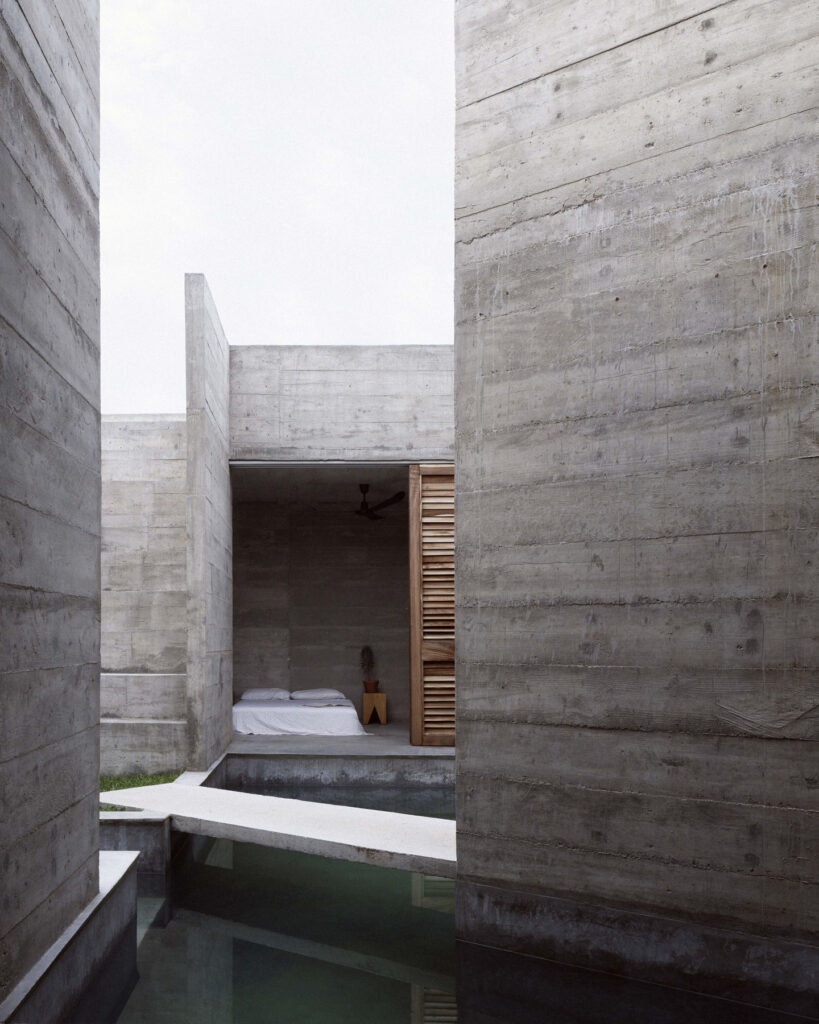
According to my thinking, the relationship with the emotions you will feel in a space is the very essence of a project, which means once you created emotions in architecture, you don’t need much more. You can naturally step back to more simple architectural elements, made out of simple but massive materials, with the ability to get old instead of getting damaged by time. I want to run away from the “everything throwaway mentality” of our modern society, getting rid of the unnecessary, creating timeless spaces which will slowly change under the action of time, ageing being part of the architecture, an architecture which will get covered by a new coat of materiality: “the patina of time”.
Are there any new technologies in architecture that you are particularly excited about?
Not at all. I really love technology, I need the internet non-stop, computers and smartphones but I still remain a peasant. I was born in Normandy, in a fisherman’s village and I still like what’s most simple in life. I still like to push and pull a switch to turn on and off the light, I don’t need my fridge to tell me what to buy, and I still like to open the curtains myself in the morning. I like the wind, I like the light, I like the heat, I don’t need much technology around me, only music. I enjoy waking up in the morning to prepare a nice black expresso coffee and go to my garden to observe the plants, the trees, the birds and the lizards; it’s my process to start working on my projects every day, contemplation.
Rising temperatures are becoming an increasingly huge issue and you designed Casa Mérida specifically to combat high temperatures without having to use AC. Do you think housing around the world will begin to implement techniques like these in the future or will the majority continue to rely on AC?
No, I don’t think so! I also understand there are parts of the world where it’s almost impossible to survive without AC, and Mérida, Yucatán is one of those. Casa Mérida is a house designed for pleasure, it’s a vacation house, it’s easier than a main residence, or an office space. I made a project based on natural crossed ventilation to avoid the use of AC, thinking if you offer the option to live in a well-ventilated space, maybe you’ll help people change their minds.
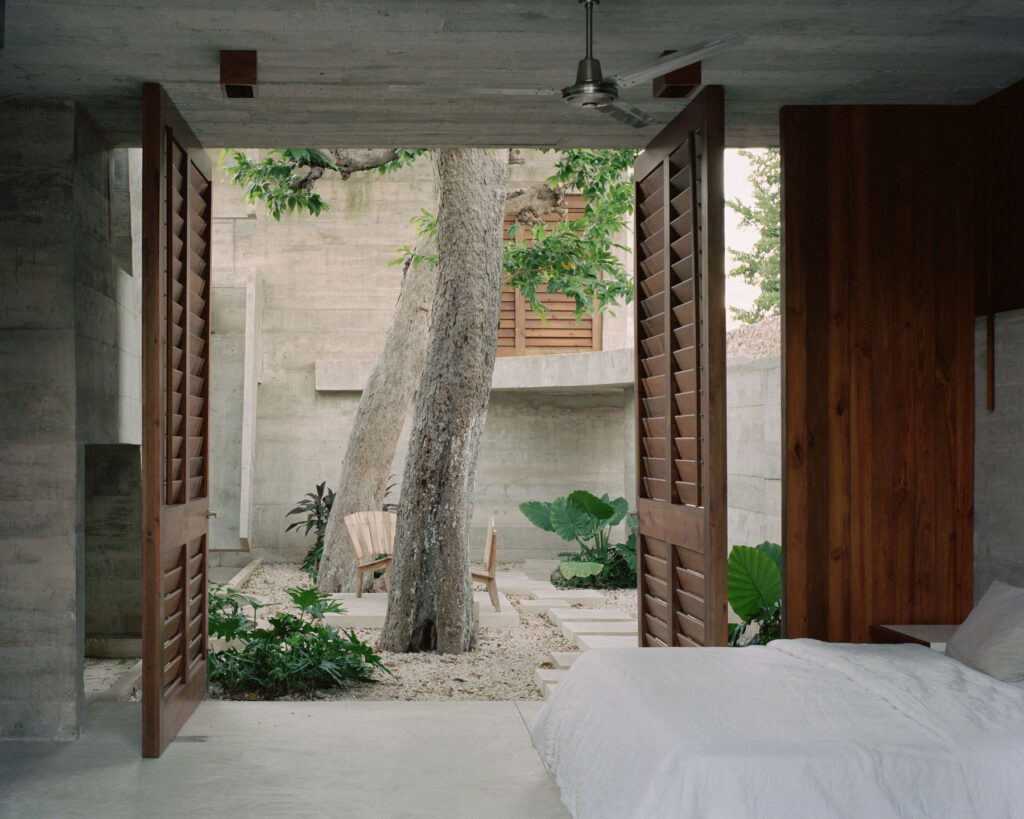
My vision of architecture focuses on changing people habits, rather than looking for technological improvements, towards a more simple way of living with fewer necessities, to minimise our impact on the ecology of our planet. It’s basically what vernacular architecture does and always has done, I’m not inventing anything, but just trying to go back to basics.
You kept elements of the old house including the front facade and the old buildings ‘bones’. Do you think this kind of perseveration is vital when modernising homes like this one?
Yes, I love it. I always think you belong to a permanent work in progress. There were people before you on the construction site you’re working on, and there will be people after you. I see architecture as a palimpsest, when you clean up the lamb parchment, the previous story will never vanish 100%. There is always something remaining from the past story in the back of the new story you are writing on top of your palimpsest.
You have stated that Casa Mérida reflects Yucatán identity, in what specific ways does it do so?
I always design my architecture as a peasant would. I always draw short structures, using short beams, between 4 to 5 meters long; dimensions I know any mason in the world is able to build without any specialised skills. I know this way everything will be local, starting with the workers. A house in Yucatán has to be built by people from Yucatán, It´s for me the first step to start belonging. I want my architecture to respond to local techniques, the stone, the wood I use will always change according to the region where I am building. As I said before, my architecture is always playing with temples and pyramids references. In the case of Casa Mérida, the house is organised along a Sacbé ”white way”, the Mayan roads that used to connect temples and pyramids together, ending in the swimming pool which looks like a concrete cenote.
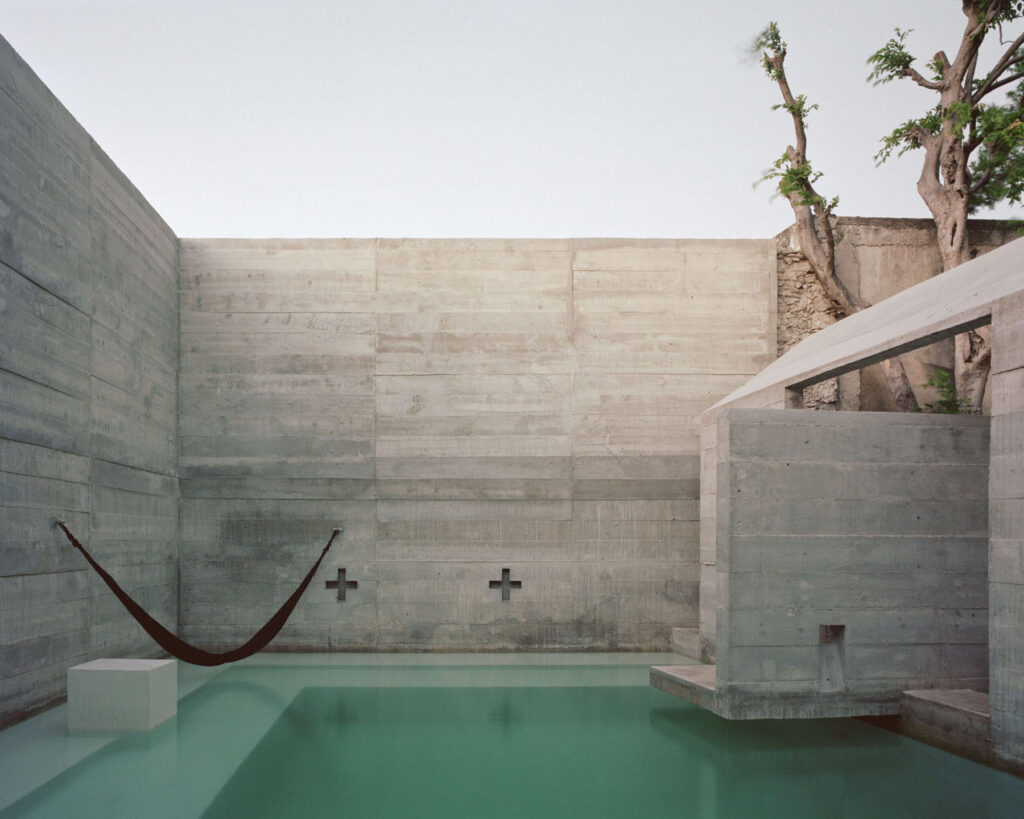
Blue textiles have been used to mirror the house’s swimming pool which is inspired by cenotes. This reminded me of David Hockey’s swimming pool series, is there any connection or inspiration there?
To be honest no, but I really like the idea! Hockney’s work is beautiful, and I like the way it’s simple, almost naive sometimes, it matches with my architecture I guess.
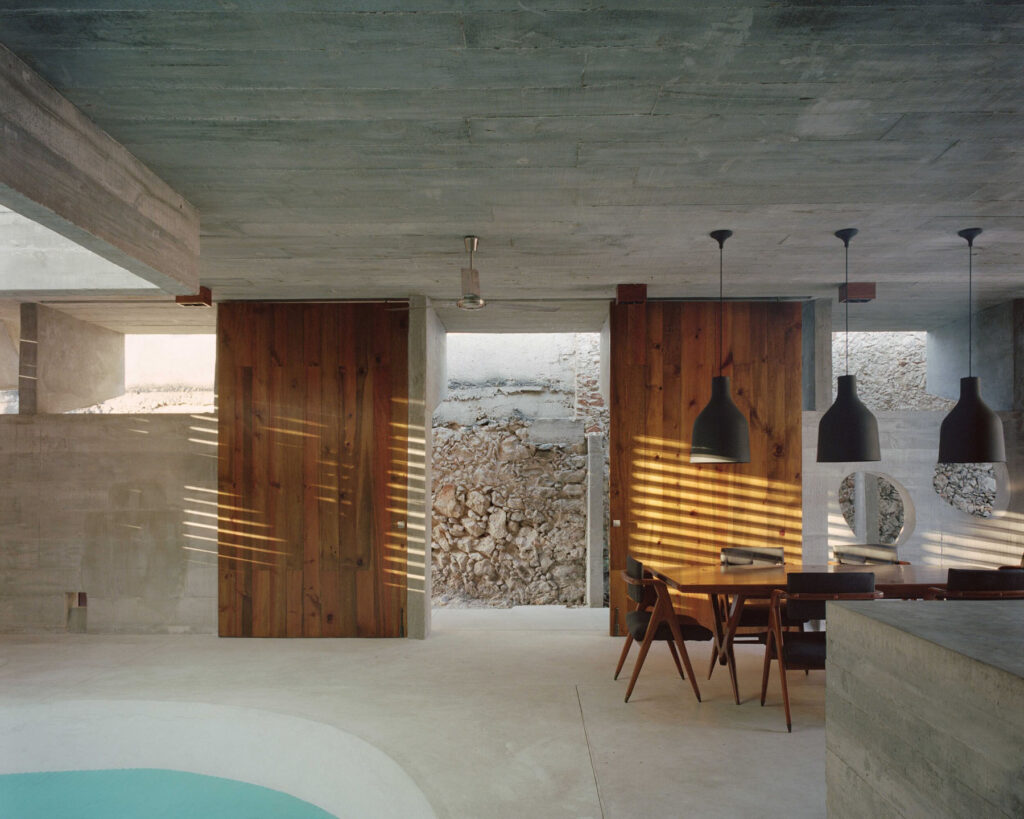
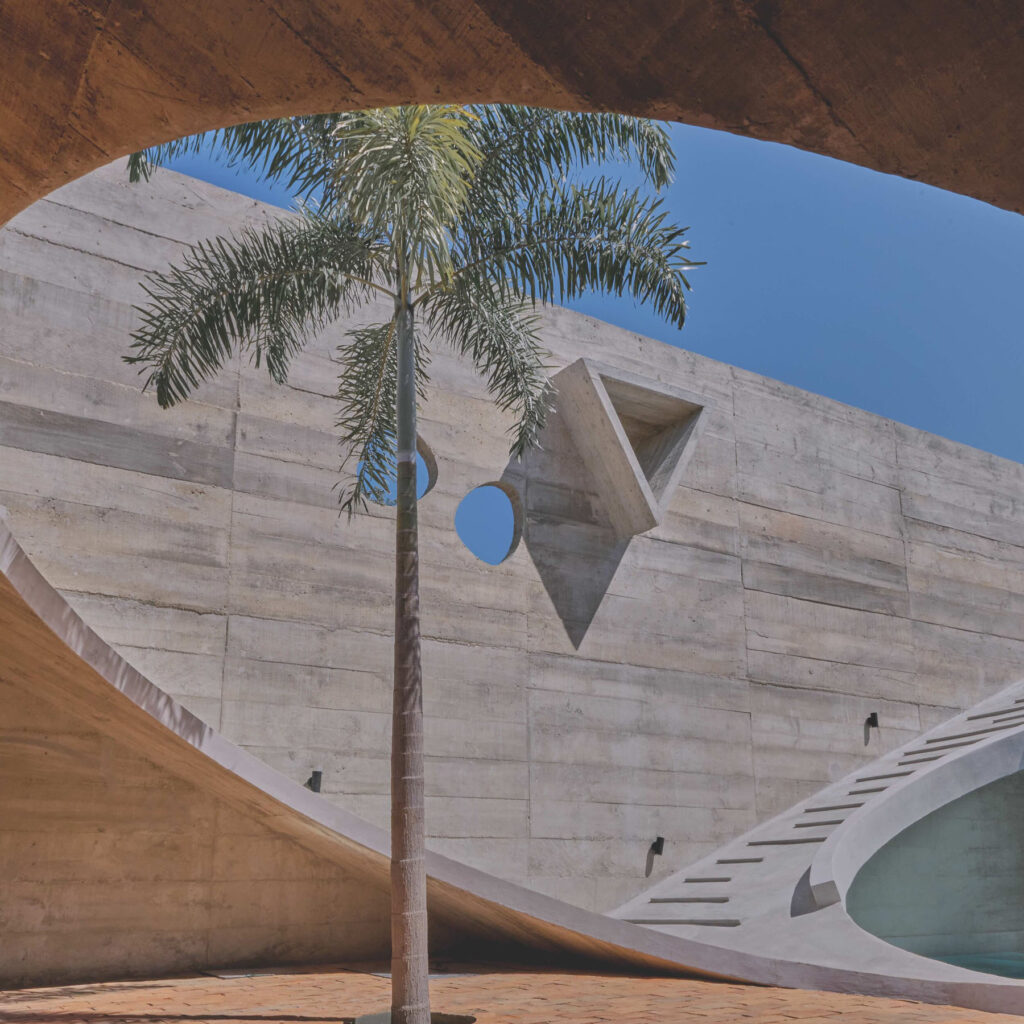
What challenges did you face whilst working on this project and how did you overcome them?
I would say the concrete. Mérida is not a place where people are used to rough concrete. Rough concrete is something more common in Oaxaca state or Mexico City. So we had to learn together with the constructor in charge, explaining to the workers what we wanted to reach. For a mason rough concrete is unfinished, they don’t catch the beauty of it at the beginning. We had to explain it to them.
But definitely, our concrete is not perfect, This is part of something I totally accept, having un-perfect concrete, trying to get better and better during the process of building. Accident is part of my aesthetic, I always tell my clients to stop looking at Tadao Ando, we won’t make a Japanese concrete, we will make a Mexican concrete, rougher than the Japanese one, A perfectly un-perfect concrete.
What advice would you give to young creatives who are interested in architecture?
Don’t buy books and magazines on contemporary architecture. Only buy books and magazines that were published up until the 80s. This way, with those references, you won’t be tempted to literally copy them, you will have to reinterpret them, so this way you will make them yours.
Are you working on any projects at the moment and do you have any plans for the future?
Yes, right now I’m finishing three houses, one outside Mexico City, one in Puerto Escondido Oaxaca and another one in Mérida Yucatán. I have also one hotel under construction in Puerto Escondido Oaxaca. I’m about to break ground for a new house in Mérida Yucatán, a house/Airbnb hotel close to Huatulco Oaxaca, and another house/Airbnb hotel in Roca Blanca Oaxaca. Meanwhile, we are working on three new projects in the conceptual phase in the office.